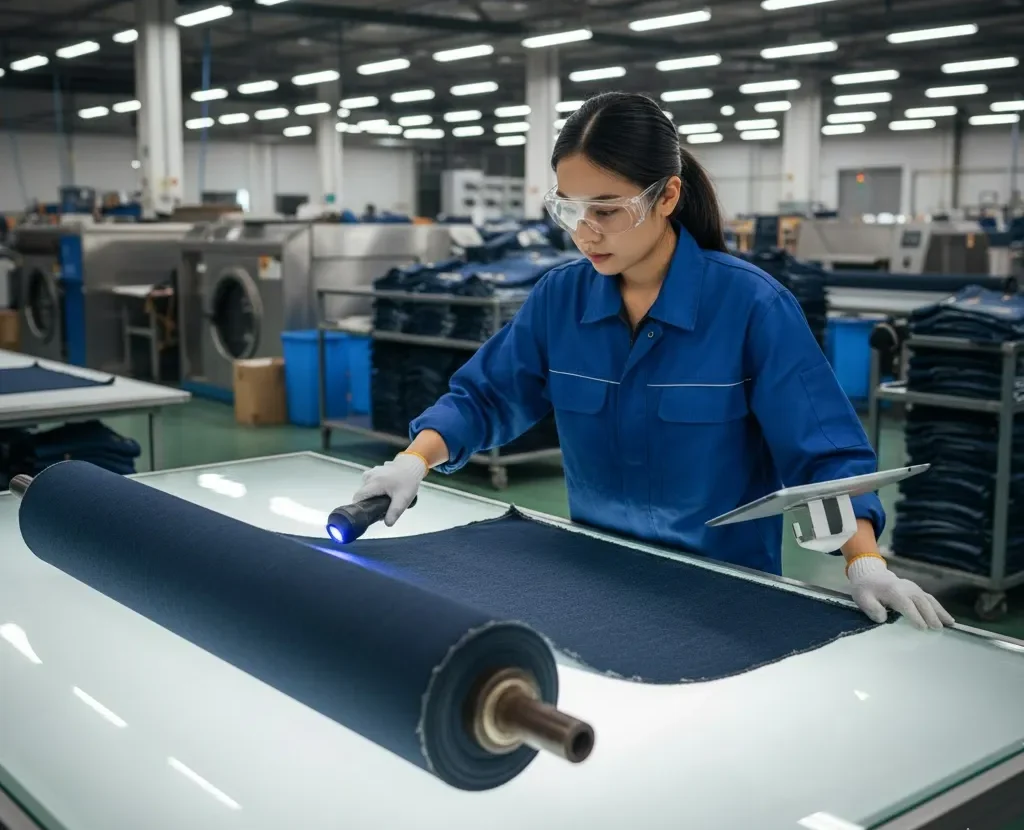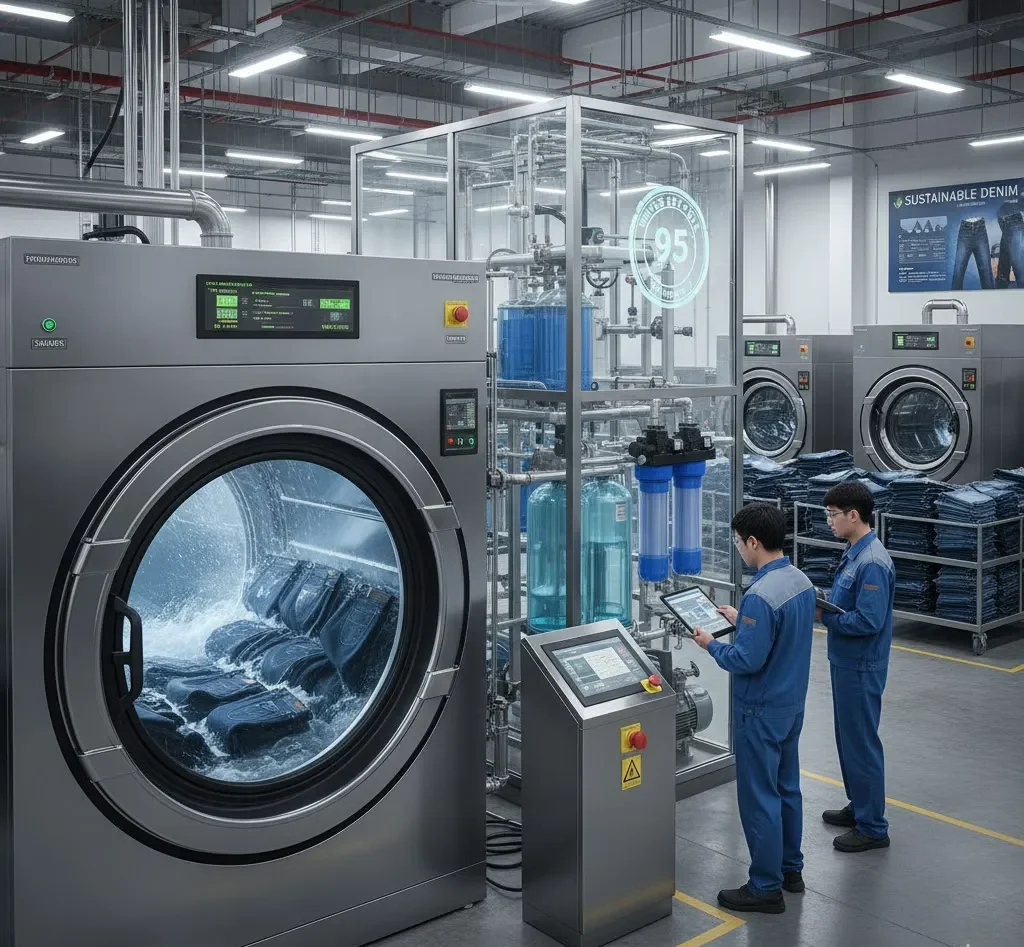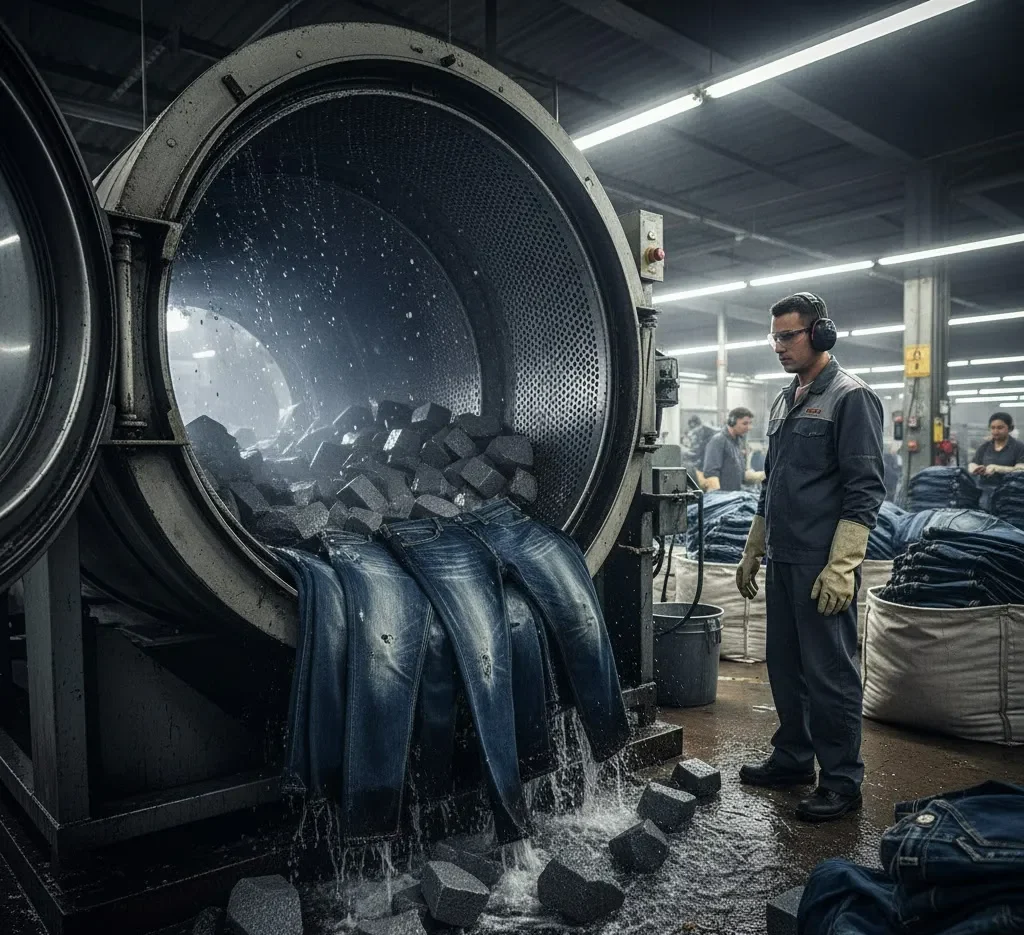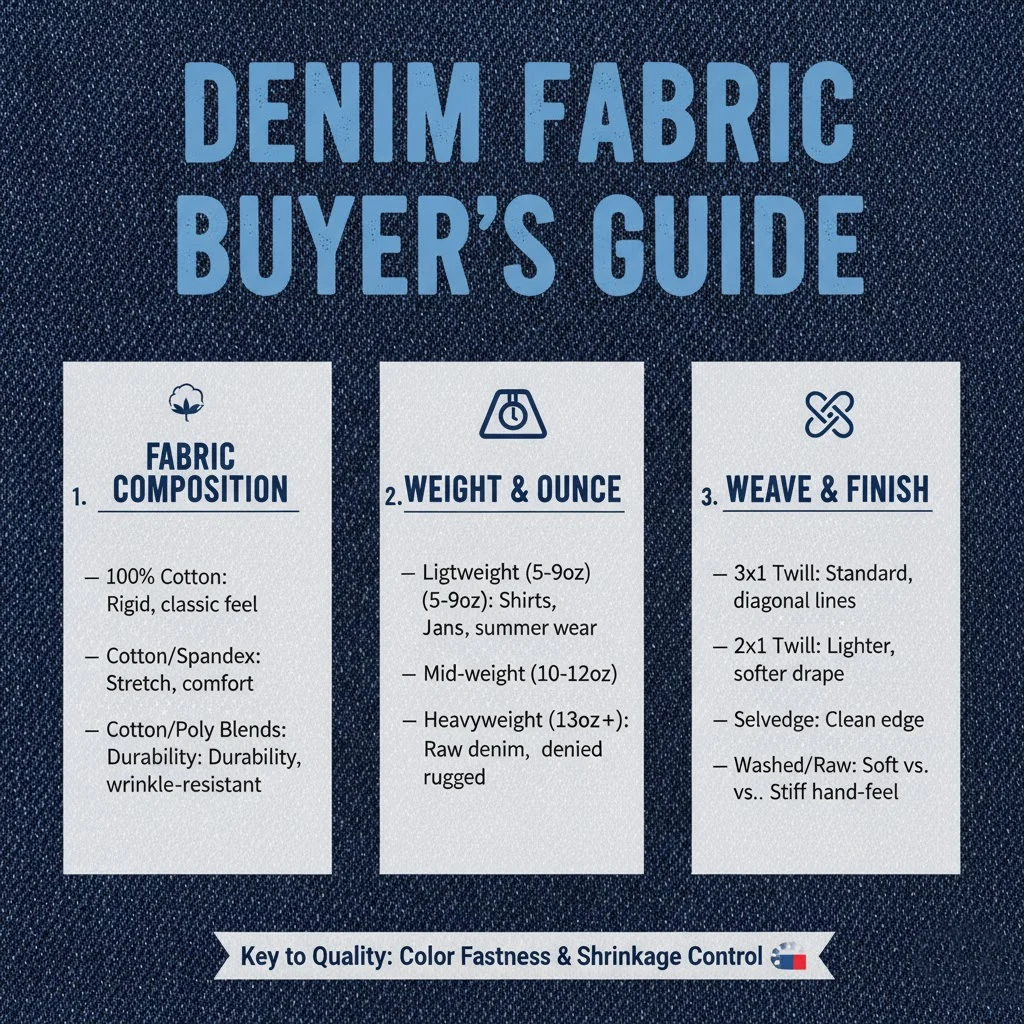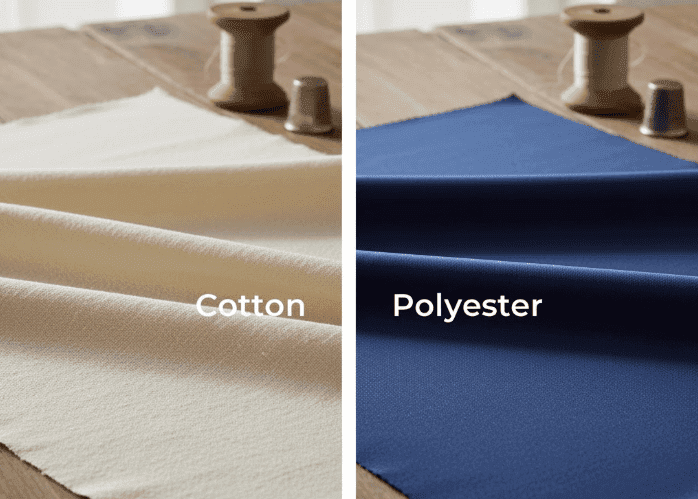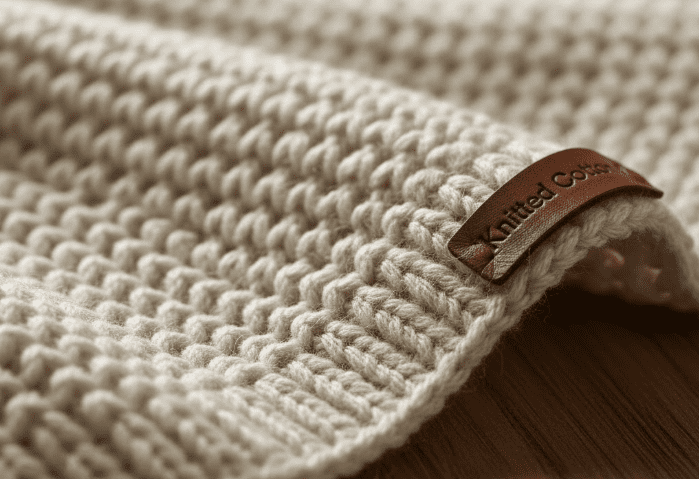The Truth About Egyptian Cotton: A Supplier’s 2025-2026 Guide
An Industry Insider’s Warning
In the marketplace, almost all high-end bedding products try to be associated with the term Egyptian cotton. But as a fabric supplier with over 20 years of experience, I can responsibly inform you that over 90% of products claiming to be Egyptian cotton are false.
Common Smokescreens
The waters here are much deeper than you might imagine. Brand stories, thread count traps, and origin certifications…these are all smokescreens designed to confuse consumers.
Your Guide to the Facts
Today, we’ll move beyond stories, focusing on the facts. From what is Egyptian cotton to how to care for Egyptian cotton products, I’ll equip you with the ability to discern authenticity.
What Is Egyptian Cotton?

Essentially, Egyptian Cotton is not a brand or a simple marketing slogan; it’s a strict classification of premium cotton defined by its plant species, geographical origin, and fiber quality. It refers to a type of cotton that is renowned for its exceptionally long, fine fibers, resulting in fabrics that are incredibly soft, strong, and lustrous.
What Is Egyptian Cotton Made Of?
It is made from the fibers of the Gossypium barbadense plant, a specific cotton species that produces Extra-Long Staple (ELS) fibers. Critically, to be considered true Egyptian Cotton, this plant must be grown exclusively in the unique, humid microclimate and fertile soil of Egypt’s Nile River Delta, where the growing conditions are perfect for this particular plant to thrive.
Why Is Egyptian Cotton So Special?
The true secret to why Egyptian cotton is so special is its Extra-Long Staple (ELS) fibers.

Tips:A typical cotton fiber might be an inch long. The fibers of premium Egyptian Cotton can reach an incredible 1.5 to 2 inches (3.5-5 cm). This extra length is the fundamental genetic trait that dictates all of its superior qualities. It allows the fibers to be spun into extremely fine, uniform, and strong yarns with very few exposed ends, which is the foundation of the fabric’s legendary performance.
What Are the Main Benefits of Egyptian Cotton?
The ELS fibers create a fabric with a near-perfect balance of properties that are highly sought after in luxury textiles. The primary Egyptian cotton benefits are:
- Unmatched Softness: The long, fine fibers create an exceptionally smooth yarn with minimal fuzzy ends. This results in a fabric that feels silky and smooth against the skin. A hallmark of genuine Egyptian cotton is that it gets even softer with each wash as the fibers relax.
- Superior Durability: Longer fibers can be spun into stronger, more resilient yarn. This makes the fabric highly resistant to abrasion, tearing, and pilling (the formation of small lint balls). A well-cared-for set of Egyptian cotton sheets can last for many years, making it a sound long-term investment.
- Exceptional Breathability: Despite its dense and luxurious feel, the natural cellulose structure of the fibers is porous, allowing air to circulate freely. This helps regulate body temperature, wicking moisture away from the skin to keep you cool and dry in the summer and warm in the winter.
- Vibrant Color Retention: The high absorbency and smoothness of the fibers allow dyes to penetrate deeper and more evenly. This results in rich, vibrant colors that are highly resistant to fading, keeping the fabric looking new for longer.
Are There Any Disadvantages to Egyptian Cotton?
Yes, as with any premium material, there are trade-offs. A balanced view considers the Egyptian cotton pros and cons.
- High Cost: Genuine Egyptian cotton is a luxury item. The specific climate requirements, long growing cycle, labor-intensive hand-harvesting, and relatively low yield make it a rare and expensive raw material.
- Prone to Wrinkling: As a 100% natural fiber, especially in high-quality, dense weaves, it does wrinkle more than synthetic blends. It requires more mindful care to maintain a smooth appearance.
- Demanding Care: To preserve the integrity of the long fibers, you cannot treat it like ordinary cotton. It requires gentle washing with specific temperature controls and detergents.
- Rampant Counterfeits: Its sterling reputation has unfortunately flooded the market with fakes and misleadingly labeled blends. This makes the consumer’s job of finding the genuine article very difficult.
What Factors Influence Egyptian Cotton Quality?
Not all products labeled “Egyptian Cotton” are created equal. Several factors determine the final quality of the fabric:

1,Fiber Grade (The Giza Number)
This is paramount. Even within Egypt, cotton is graded by quality. The highest grades are named after the Giza region where they are grown and are given a number (e.g., Giza 45, Giza 87). These numbers signify specific, tested fiber properties and are a guarantee of top-tier Egyptian cotton quality.
2,Harvesting Method
The best Egyptian cotton is hand-picked. This gentle method ensures that the fibers are harvested with less stress, keeping the staple pure, intact, and undamaged. Machine harvesting can tear and compress the delicate fibers.
3,Manufacturing Process
Even the best raw cotton can be ruined by poor processing. The techniques used for spinning, weaving (e.g., Percale’s crisp feel vs. Sateen’s silky feel), and finishing are critical in determining the final hand-feel, luster, and performance of the fabric.
4,Purity
The label should always read 100% Egyptian Cotton. Any phrasing like Egyptian cotton blend,Egyptian touch, or Egyptian finish is a red flag indicating a lower quality product.
What Products Are Typically Made From Egyptian Cotton?
Given its superior profile, the primary Egyptian cotton uses are in luxury textiles that have direct, intimate contact with the skin.
Luxury Bed Linens
This is its most famous application. Its softness, breathability, and durability make it the gold standard for sheets, duvet covers, and pillowcases.
High-End Bath Linens
Five-star hotel-quality bathrobes and towels are often made from it, valued for their exceptional softness and absorbency.
Fine Apparel
It is used in designer dress shirts, premium polo shirts, and luxury undergarments where ultimate comfort is the primary goal.
How Can You Spot Fake Egyptian Cotton?
Here are a few insider techniques to identify the real deal.
Tools & Materials Needed:
- Your Eyes
- Your Fingertips
- The Product Label and Packaging
The Steps:
1. Scrutinize the Certification
Look for and verify the official golden triangle logo of the Cotton Egypt Association™. This is the most reliable seal of authenticity. You can often verify the product on their The Cotton Egypt Association Official Website.
2. Engage Your Fingertips
Pinch a corner of the fabric. Gently rub it between your thumb and forefinger for 5-10 seconds. Genuine fabric feels cool, exceptionally smooth, and has a noticeable weight or “drape.” You should feel almost no fuzzy fiber ends.
3. Observe the Sheen
Hold the fabric up to a natural light source at a 45-degree angle. It will display a subtle, elegant, and uniform luster, not a cheap, synthetic shine.
4. Analyze the Price
If a full set of sheets claiming to be 100% top-grade Egyptian Cotton is selling for under a hundred dollars, it is almost certainly a fake.
How Should You Care for Egyptian Cotton?
Proper care is essential to protect your investment.
Tools & Materials Needed:
- A neutral, bleach-free liquid detergent
- A washing machine with a ‘Delicate’ cycle
- (Optional) Wool dryer balls

The Steps:
1. Preparation
Before washing, turn bedding inside out to protect the lustrous surface of the fabric.
2. Washing
Select the Delicate cycle and use cool or warm water (never hot), no higher than 40°C . Use the recommended amount of a gentle, neutral detergent.
3. Drying
Tumble dry on a low-heat or air-fluff setting. Remove the items when they are still about 5% damp to prevent over-drying, which can damage the fibers. Shake them out and either air-dry the rest of the way or put them directly on the bed.
Tips:For more detailed steps and tips, check out our complete Ultimate Guide to Cotton Care
What Is the Relationship Between Egyptian and Giza Cotton?
The relationship is simple: Giza Cotton is a type of Egyptian Cotton—specifically, it is the highest grade.
Think of it this way:
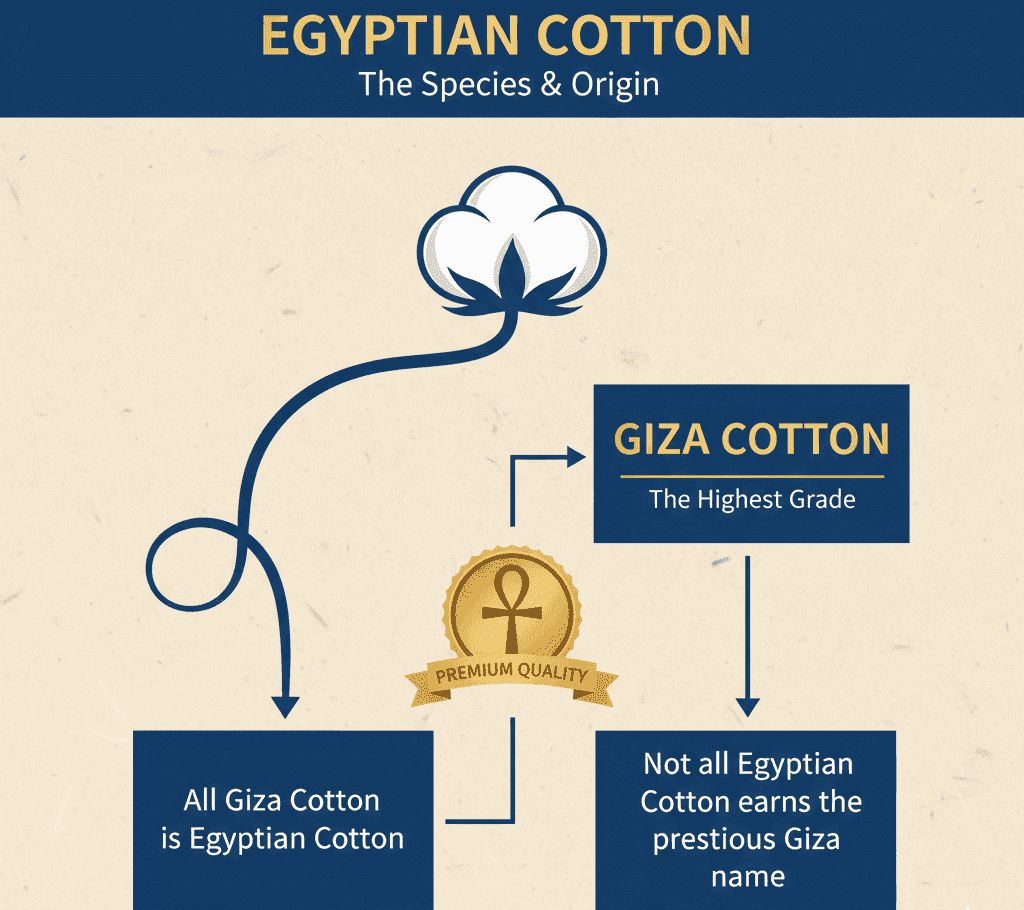
Egyptian Cotton (The Species & Origin)
└── Giza Cotton (The Highest Grade)
All Giza Cotton is Egyptian Cotton, but not all Egyptian Cotton earns the prestigious Giza name.
Giza cottons are a special classification with their own grade numbers (e.g., Giza 45, Giza 87), representing the absolute pinnacle of quality with the longest, finest, and strongest fibers available.
Conclusion
In essence, what is Egyptian cotton?
It is an investment in unparalleled comfort and longevity. While it is expensive and demands proper care, knowing how to identify the real article and treat it right will reward you with years of luxurious comfort. It’s more than a purchase; it’s a long-term enhancement to your well-being.
Frequently Asked Questions (FAQ)
Q1: How does Egyptian Cotton compare to Pima Cotton?
A: Both are premier Extra-Long Staple (ELS) cottons and their quality can be very comparable. The main difference is origin—Pima is primarily grown in the Americas. While their quality is similar, Egyptian Cotton holds a more storied history and arguably greater brand prestige globally.
Q2: Does a higher thread count always mean better quality?
A: Absolutely not. This is one of the biggest myths in the industry.
Fiber quality is always more important than thread count. A 400-thread-count sheet made from top-grade Giza cotton will feel far superior and last much longer than a 1000-thread-count sheet made from inferior, short-staple cotton.
Q3: Why does new Egyptian Cotton sometimes feel crisp?
A: This is normal, especially for fabrics with a Percale weave. High-quality cotton often has a breaking-in period. It usually takes about 3-5 wash cycles for any factory finish to fade and for the fibers to fully relax, revealing their signature, ever-increasing softness.

